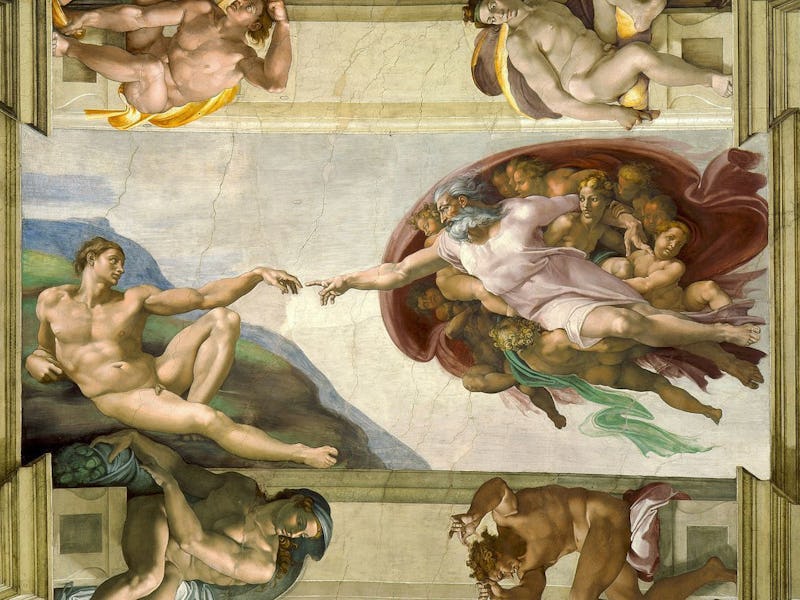Michelangelo is the sort of mega-genius that can be impossible to understand, but scientists now think they’re one step closer to triangulating why his work inspires awe. A new study published in Clinical Anatomy demonstrates that Michelangelo didn’t just draw inspiration from above — he did the math on his subjects.
The Brazilian researchers looked at the Sistine Chapel fresco “The Creation of Adam,” which famously features Adam reaching his finger out to God, ET-style. Like much of his work, the fresco shows off Michelangelo’s considerable knowledge of human anatomy. The Brazilian team’s findings suggest that Michelangelo didn’t just know a lot about anatomy — he was also aware that anatomical structures that incorporated the golden ratio were viewed as more structurally efficient, which is why he included them in so much of his work. Basically, Michelangelo was using math to hack our perception of good art.
The golden ratio, 1.6, is calculated like this: You divide a line into two parts so that the length of the longer part divided by that of the shorter part is equal to the length of the whole line divided by the length of the longer part. It’s a pretty abstract idea that, fortunately, can easily be illustrated in human anatomy as well as in the objects that surround us, like snail shells and sunflowers.
To illustrate that Michelangelo knowingly incorporated the golden ratio in his work, the researchers measured the distances between the edges of “The Creation of Adam” and the fresco’s “critical element” — the point where Adam’s and God’s fingers don’t quite touch. That point divided the painting into the longer and shorter parts discussed earlier — and the researchers found that the lengths of these parts actually do correspond with the golden ratio. And, taken in the context of the chapel’s ceiling — the fresco is one of many — the point where the fingers of God and Adam almost meet splits the entire ceiling into two parts that also correspond to the golden ratio.
In addition to structural efficiency, the golden ratio has been classically associated with aesthetic beauty and harmony, though why we find it so pleasing remains somewhat of a mystery. Math nerds and artists alike have puzzled over the golden ratio for millennia: The great thinkers in ancient Greece saw it come up repeatedly in geometry, and Romantic composers like Debussy and Satie used it to organize their compositions.
Dr. Deivis de Campos, the author of the study, thinks his team’s findings can only enhance our appreciation of the great artist’s work, “We believe that this discovery will bring a new dimension to the great work of Michelangelo.”
Hopefully this puts the lie to that old saying about genius being “one percent inspiration and 99 percent perspiration.” There’s calculation too.
